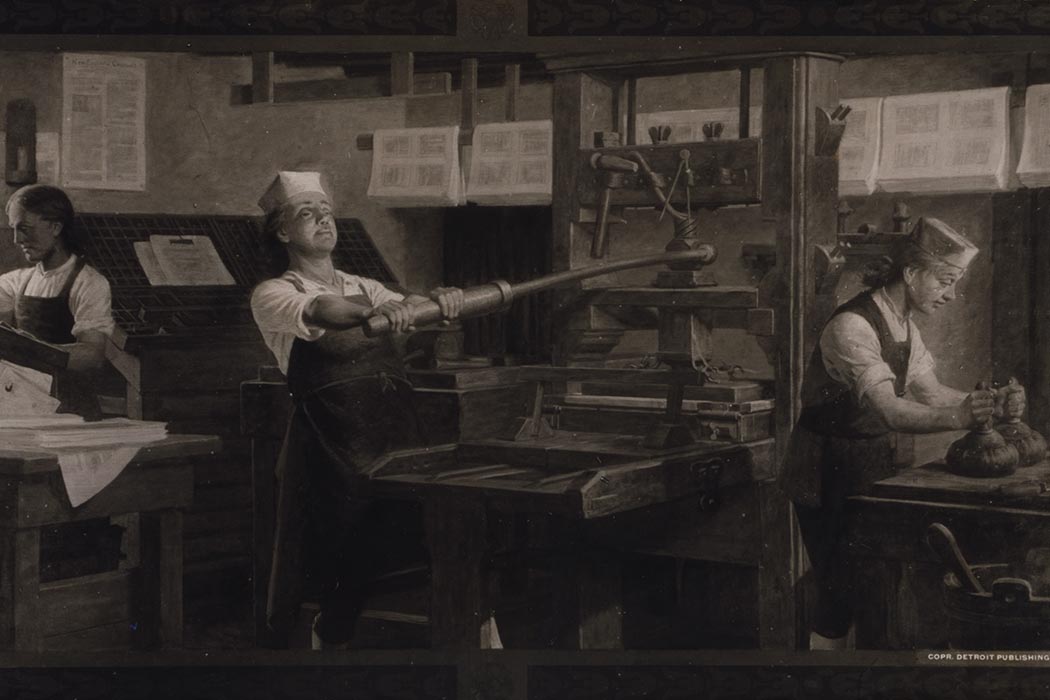When it comes to finance, early Americans like Benjamin Franklin make Bernie Sanders look conservative
Public banking has recently become part of the national debate again, as a movement to reintroduce postal banking—which allows people to do their banking in the same place they send packages and buy stamps—has emerged, most recently receiving support from the American Postal Workers Union, as well as Senator Bernie Sanders, Democratic presidential primary candidate and self-described democratic socialist.
Such proposals are often seen as radical departures from American free market traditions, even “un-American.” Yet the origins of American banking lie in the public sphere: In fact, in early America, there was no such thing as a private bank. Sanders, who has said that the post office should offer a “modest” array of financial services, may sound radical to some Americans today, but he is a milquetoast on the subject of public banking compared to Benjamin Franklin.
In 1729, when Franklin was only 23, the printer published an anonymous pamphlet emphasizing the need for well-run government land banks to ensure the stability of the monetary system. This idea was well received and enacted by the Pennsylvania assembly.
As I described in the first “Treasury Notes” column, colonial governments legislated “emissions” of paper money (that is, quantities to be printed). Each county was given a portion of the emission to lend to people seeking mortgages and other loans. Public entities known as “loan offices,” or “land banks,” issued these mortgages, which were designed to provide cheap credit, primarily to small farmers (referred to as yeomen). Legislatures set uniform interest rates on all mortgages made, and if debtors defaulted, the county was responsible for using taxation to pay the bank back.
One of the most important features of this system was how early Americans handled interest. Today there are no public requirements for how banks should spend interest income (or even that they should spend it at all). But in colonial America, the interest from the land bank loans was an important source of government funding. As historian Theodore Thayer explained in his classic account of colonial mortgages, colonies used the interest earned on the loans to help governments cover their expenses. In New England, towns usually kept part of the interest, which they used for relief for the poor, as well as schools, public buildings, and other public goods.
For example, in 1724 New Jersey passed its first land bank emission. In the original legislation, bills received for interest payments were to be retired and burned. Legislatures, however, quickly realized that this did not make sense: Burning those bills would leave none in circulation to repay the interest on them. So they decided, instead, to use the interest income to pay government employees’ salaries and other public expenses. This proved quite popular as it reduced the tax burden. In this way, governments purposely kept paper money in circulation and ensured that there was enough money circulating to repay principal and interest on mortgages. No such control or planning goes into modern bank loans, which is obvious when you look at the foreclosure crisis of the past decade.
In 1765, as a diplomat in London for the colonies, Benjamin Franklin proposed a land bank system for all the North American colonies as an alternative to the Stamp Act, which imposed a direct tax on colonists to pay for British troops stationed on American soil. He envisioned this system working similarly to the one his pamphlet had inspired so many years earlier in Pennsylvania. The interest income would accrue to Britain, but Franklin argued (to the British) that the colonists would tolerate this burden much more easily than taxes.
No national bank ever came to pass, but the long tradition of public banking continued on the state level after the American Revolution well into the 19th century. Indeed, no private banks existed in America until 1781, and even in the early 19th century, private banks were required to obtain public charters and to continually prove to legislatures that they served some public purpose; pursuing profits for their shareholders was not enough.
Compared to this history—a completely public structure of banking in the colonial and the early post-Constitution years—current postal banking proposals seem quite modest, envisioning a relatively limited role for the government and only minor curbs on private sector greed.







